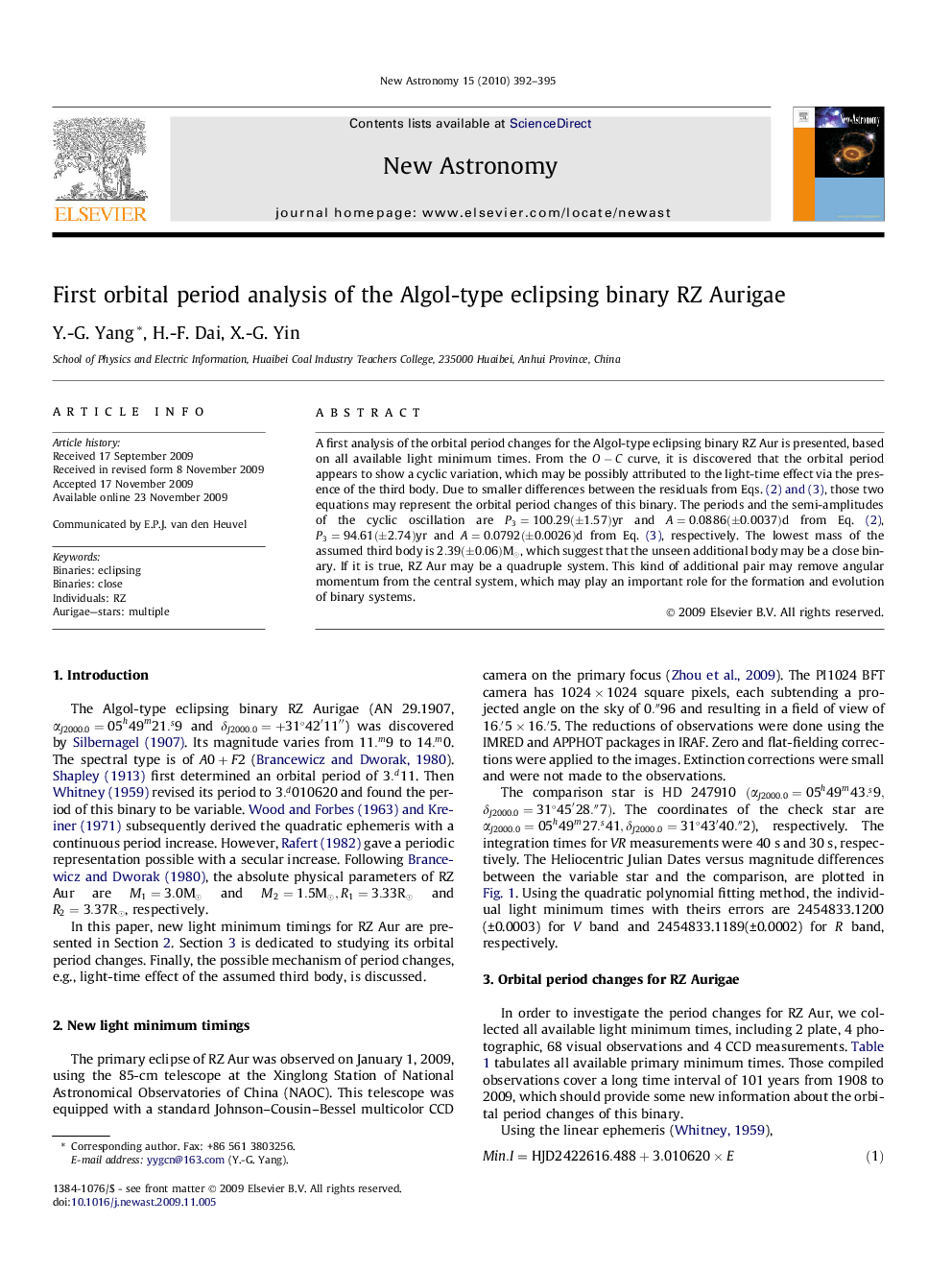| Article ID | Journal | Published Year | Pages | File Type |
|---|---|---|---|---|
| 1779741 | New Astronomy | 2010 | 4 Pages |
A first analysis of the orbital period changes for the Algol-type eclipsing binary RZ Aur is presented, based on all available light minimum times. From the O − C curve, it is discovered that the orbital period appears to show a cyclic variation, which may be possibly attributed to the light-time effect via the presence of the third body. Due to smaller differences between the residuals from Eqs. (2) and (3), those two equations may represent the orbital period changes of this binary. The periods and the semi-amplitudes of the cyclic oscillation are P3=100.29(±1.57)yrP3=100.29(±1.57)yr and A=0.0886(±0.0037)dA=0.0886(±0.0037)d from Eq. (2), P3=94.61(±2.74)yrP3=94.61(±2.74)yr and A=0.0792(±0.0026)dA=0.0792(±0.0026)d from Eq. (3), respectively. The lowest mass of the assumed third body is 2.39(±0.06)M⊙2.39(±0.06)M⊙, which suggest that the unseen additional body may be a close binary. If it is true, RZ Aur may be a quadruple system. This kind of additional pair may remove angular momentum from the central system, which may play an important role for the formation and evolution of binary systems.
